10.2: Breakfast and Brunch
- Page ID
- 22046
\( \newcommand{\vecs}[1]{\overset { \scriptstyle \rightharpoonup} {\mathbf{#1}} } \)
\( \newcommand{\vecd}[1]{\overset{-\!-\!\rightharpoonup}{\vphantom{a}\smash {#1}}} \)
\( \newcommand{\id}{\mathrm{id}}\) \( \newcommand{\Span}{\mathrm{span}}\)
( \newcommand{\kernel}{\mathrm{null}\,}\) \( \newcommand{\range}{\mathrm{range}\,}\)
\( \newcommand{\RealPart}{\mathrm{Re}}\) \( \newcommand{\ImaginaryPart}{\mathrm{Im}}\)
\( \newcommand{\Argument}{\mathrm{Arg}}\) \( \newcommand{\norm}[1]{\| #1 \|}\)
\( \newcommand{\inner}[2]{\langle #1, #2 \rangle}\)
\( \newcommand{\Span}{\mathrm{span}}\)
\( \newcommand{\id}{\mathrm{id}}\)
\( \newcommand{\Span}{\mathrm{span}}\)
\( \newcommand{\kernel}{\mathrm{null}\,}\)
\( \newcommand{\range}{\mathrm{range}\,}\)
\( \newcommand{\RealPart}{\mathrm{Re}}\)
\( \newcommand{\ImaginaryPart}{\mathrm{Im}}\)
\( \newcommand{\Argument}{\mathrm{Arg}}\)
\( \newcommand{\norm}[1]{\| #1 \|}\)
\( \newcommand{\inner}[2]{\langle #1, #2 \rangle}\)
\( \newcommand{\Span}{\mathrm{span}}\) \( \newcommand{\AA}{\unicode[.8,0]{x212B}}\)
\( \newcommand{\vectorA}[1]{\vec{#1}} % arrow\)
\( \newcommand{\vectorAt}[1]{\vec{\text{#1}}} % arrow\)
\( \newcommand{\vectorB}[1]{\overset { \scriptstyle \rightharpoonup} {\mathbf{#1}} } \)
\( \newcommand{\vectorC}[1]{\textbf{#1}} \)
\( \newcommand{\vectorD}[1]{\overrightarrow{#1}} \)
\( \newcommand{\vectorDt}[1]{\overrightarrow{\text{#1}}} \)
\( \newcommand{\vectE}[1]{\overset{-\!-\!\rightharpoonup}{\vphantom{a}\smash{\mathbf {#1}}}} \)
\( \newcommand{\vecs}[1]{\overset { \scriptstyle \rightharpoonup} {\mathbf{#1}} } \)
\( \newcommand{\vecd}[1]{\overset{-\!-\!\rightharpoonup}{\vphantom{a}\smash {#1}}} \)
\(\newcommand{\avec}{\mathbf a}\) \(\newcommand{\bvec}{\mathbf b}\) \(\newcommand{\cvec}{\mathbf c}\) \(\newcommand{\dvec}{\mathbf d}\) \(\newcommand{\dtil}{\widetilde{\mathbf d}}\) \(\newcommand{\evec}{\mathbf e}\) \(\newcommand{\fvec}{\mathbf f}\) \(\newcommand{\nvec}{\mathbf n}\) \(\newcommand{\pvec}{\mathbf p}\) \(\newcommand{\qvec}{\mathbf q}\) \(\newcommand{\svec}{\mathbf s}\) \(\newcommand{\tvec}{\mathbf t}\) \(\newcommand{\uvec}{\mathbf u}\) \(\newcommand{\vvec}{\mathbf v}\) \(\newcommand{\wvec}{\mathbf w}\) \(\newcommand{\xvec}{\mathbf x}\) \(\newcommand{\yvec}{\mathbf y}\) \(\newcommand{\zvec}{\mathbf z}\) \(\newcommand{\rvec}{\mathbf r}\) \(\newcommand{\mvec}{\mathbf m}\) \(\newcommand{\zerovec}{\mathbf 0}\) \(\newcommand{\onevec}{\mathbf 1}\) \(\newcommand{\real}{\mathbb R}\) \(\newcommand{\twovec}[2]{\left[\begin{array}{r}#1 \\ #2 \end{array}\right]}\) \(\newcommand{\ctwovec}[2]{\left[\begin{array}{c}#1 \\ #2 \end{array}\right]}\) \(\newcommand{\threevec}[3]{\left[\begin{array}{r}#1 \\ #2 \\ #3 \end{array}\right]}\) \(\newcommand{\cthreevec}[3]{\left[\begin{array}{c}#1 \\ #2 \\ #3 \end{array}\right]}\) \(\newcommand{\fourvec}[4]{\left[\begin{array}{r}#1 \\ #2 \\ #3 \\ #4 \end{array}\right]}\) \(\newcommand{\cfourvec}[4]{\left[\begin{array}{c}#1 \\ #2 \\ #3 \\ #4 \end{array}\right]}\) \(\newcommand{\fivevec}[5]{\left[\begin{array}{r}#1 \\ #2 \\ #3 \\ #4 \\ #5 \\ \end{array}\right]}\) \(\newcommand{\cfivevec}[5]{\left[\begin{array}{c}#1 \\ #2 \\ #3 \\ #4 \\ #5 \\ \end{array}\right]}\) \(\newcommand{\mattwo}[4]{\left[\begin{array}{rr}#1 \amp #2 \\ #3 \amp #4 \\ \end{array}\right]}\) \(\newcommand{\laspan}[1]{\text{Span}\{#1\}}\) \(\newcommand{\bcal}{\cal B}\) \(\newcommand{\ccal}{\cal C}\) \(\newcommand{\scal}{\cal S}\) \(\newcommand{\wcal}{\cal W}\) \(\newcommand{\ecal}{\cal E}\) \(\newcommand{\coords}[2]{\left\{#1\right\}_{#2}}\) \(\newcommand{\gray}[1]{\color{gray}{#1}}\) \(\newcommand{\lgray}[1]{\color{lightgray}{#1}}\) \(\newcommand{\rank}{\operatorname{rank}}\) \(\newcommand{\row}{\text{Row}}\) \(\newcommand{\col}{\text{Col}}\) \(\renewcommand{\row}{\text{Row}}\) \(\newcommand{\nul}{\text{Nul}}\) \(\newcommand{\var}{\text{Var}}\) \(\newcommand{\corr}{\text{corr}}\) \(\newcommand{\len}[1]{\left|#1\right|}\) \(\newcommand{\bbar}{\overline{\bvec}}\) \(\newcommand{\bhat}{\widehat{\bvec}}\) \(\newcommand{\bperp}{\bvec^\perp}\) \(\newcommand{\xhat}{\widehat{\xvec}}\) \(\newcommand{\vhat}{\widehat{\vvec}}\) \(\newcommand{\uhat}{\widehat{\uvec}}\) \(\newcommand{\what}{\widehat{\wvec}}\) \(\newcommand{\Sighat}{\widehat{\Sigma}}\) \(\newcommand{\lt}{<}\) \(\newcommand{\gt}{>}\) \(\newcommand{\amp}{&}\) \(\definecolor{fillinmathshade}{gray}{0.9}\)Breakfast and Brunch
Breakfast is often an on-the-go, rushed experience; hence the popularity of breakfast sandwiches, jumbo muffins and disposable coffee cups. Brunch, on the other hand, is a leisurely experience, combining breakfast and lunch in to a social occasion. Brunch menus include traditional breakfast foods along with almost anything else. Unlike breakfast, brunch is often accompanied by champagne or other alcoholic beverages and concludes with a pastry or dessert.
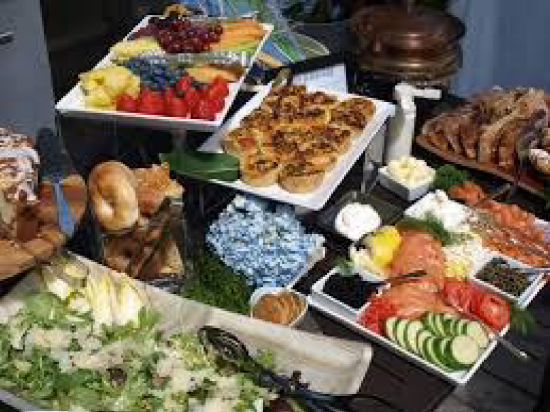
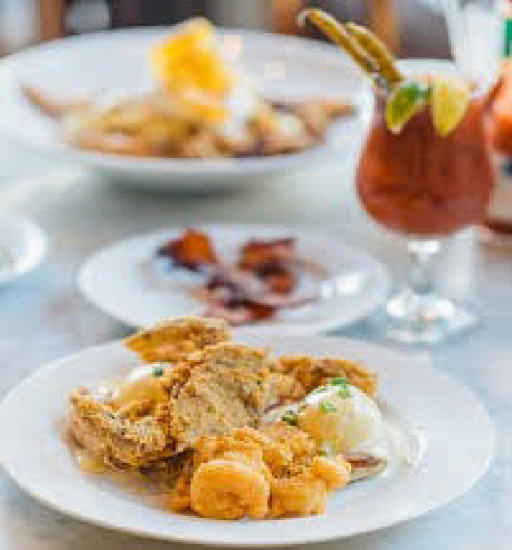
New Orleans Jazz Brunch. aboveabc.com / neworleans.co
Breakfast menus typically include the following items:
- Coffee, tea or other hot beverages Fruits or fruit juices
- Eggs
- Breads, including sweet breads, Cereals, and grains
- Potatoes
- Pancakes, waffles, and French toast
- Breakfast Meats
- Bacon, breakfast sausage, smoked ham
- Dairy products, including milk, cheese and yogurt
- Although few people could sit down to a breakfast including all of these components even occasionally, most food service operations find it necessary to offer some items from each category in order to meet their customers' expectations.

The American Breakfast. tastessense.com
Beverages
Water, coffee and tea are the staples of most beverage menus. Despite their relatively low price, bottled water or a good cup of coffee or tea can be extremely important to a customer's impression of a food service operation. A cup of coffee is often either the very first or the very last item consumed by a customer. Tea, whether iced or hot, is often consumed throughout the meal. Consequently, it is important to learn to prepare and serve these beverages properly. Many varieties of water are now available and some customers prefer these specialty waters to that from the tap. Not only do these beverages complement a meal, they are important profit centers for restaurant owners. Appreciation of the proper preparation and service of these beverages is an important part of a culinary student's training.
Coffee
City roast: Also called American or brown roast, city roast is the most widely used coffee style in this country. City roast, which is medium brown in color, produces a beverage that may lack brilliance or be a bit flat, yet, it is the roast most Americans assume they prefer because it is the roast most often used in grocery store blends.
Brazilian: Somewhat darker than a city roast, Brazilian roast should begin to show a hint of dark-roast flavor. The beans should show a trace of oil. In this context, the word Brazilian has no relationship to coffee grown in Brazil.
Viennese: Also called medium-dark roast, Viennese roast generally falls somewhere between a standard city roast and French roast.
French roast: French roast, also called New Orleans or dark roast, approaches espresso in flavor without sacrificing smoothness. The beans should be the color of semisweet chocolate, with apparent oiliness on the surface.
Espresso roast: Espresso roast, also called Italian roast, is the darkest of all. The beans are roasted until they are virtually burnt. The beans should be black with a shiny, oily surface.
Tea
Black Teas
Assam: A rich black tea from northeastern India with a reddish color. It is valued by connoisseurs, especially for breakfast.

Assam tea. Flickr
Ceylon: A full-flavored black tea with a golden color and delicate fragrance. Ideal for serving iced, it does not become cloudy when cold. Darjeeling the champagne of teas, grown in the foothills of the Himalayas in northeastern India. It is a full-bodied, black tea with a Muscat flavor.
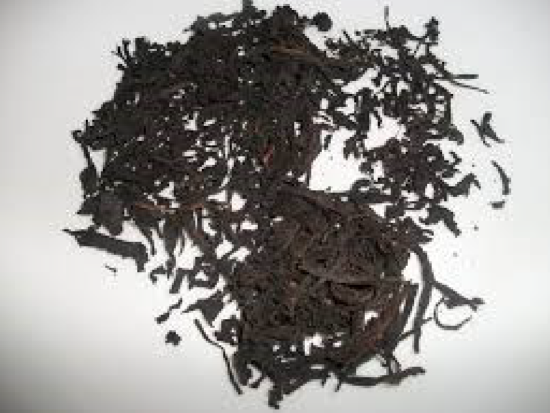
Ceylon Tea. Wikipedia
Earl Grey: blend of black teas, usually including Darjeeling, flavored with oil of bergamot. A popular choice for afternoon tea.
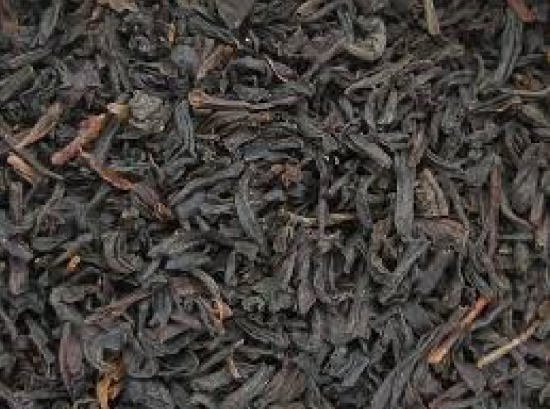
Twinings Earl Grey. Wikipedia
English Breakfast: An English blend of Indian and Sri Lankan black teas; it is full-bodied and robust, with a rich color.
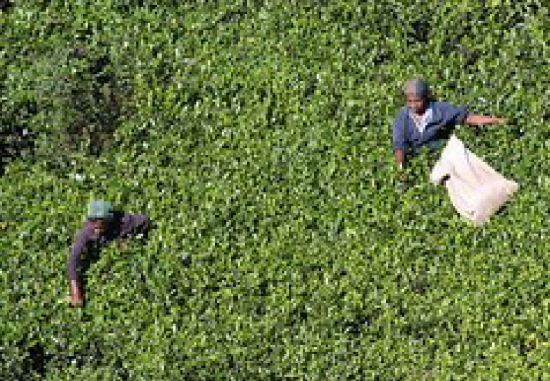
English breakfast tea. Pricey, CC BY ND 2.0
Keemum: A mellow black Chinese tea with a strong aroma. It is less astringent than other teas and is delicious iced.
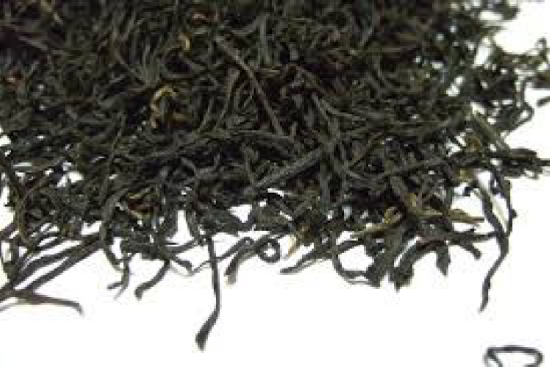
Keemum Chinese Tea. Wikipedia
Lapsang Souchong: A large -leafed (souchong) tea from the Lapsang district of China. It has a distinctive tarry, smoky flavor and aroma, appropriate for afternoon tea or dinner.
Green Teas
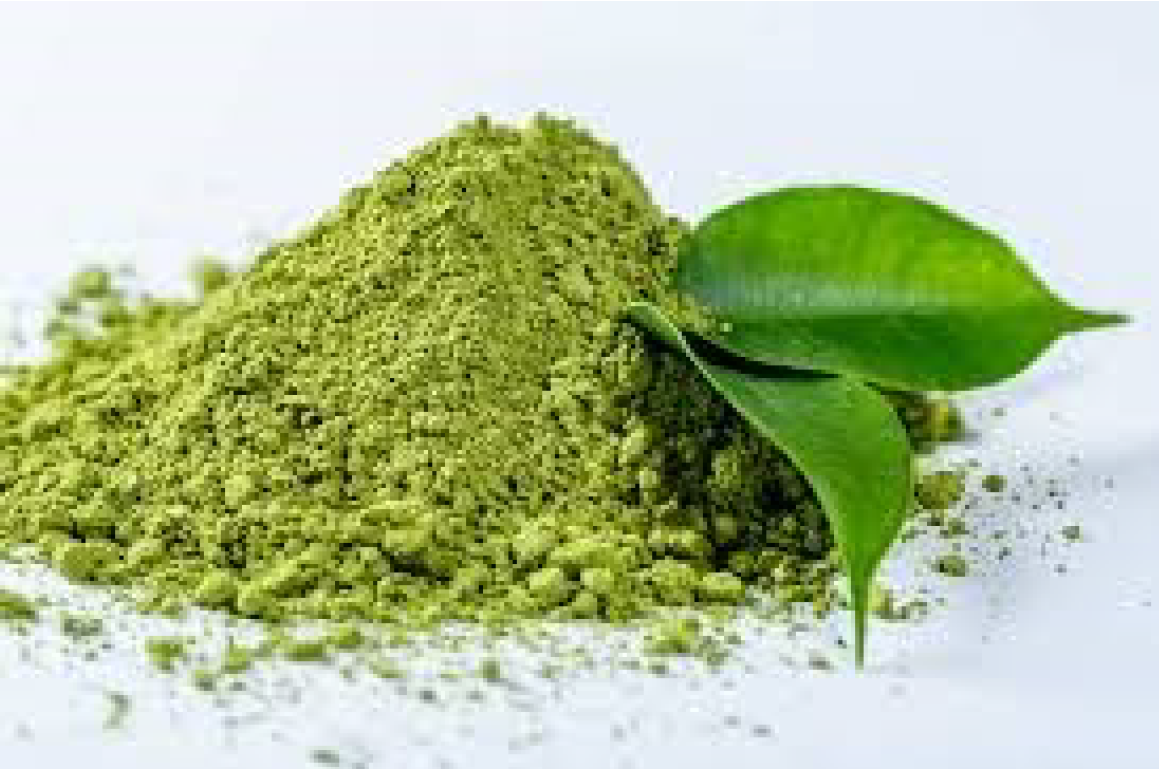
Green Tea: leaves & powder. Flickr
Gunpowder: A green Chinese tea with a tightly curled leaf and gray-green color. It has a pungent flavor and a light straw color. It is often served after the evening meal.

Twinings gunpowder green tea. Commons.Wikipedia.org
Sencha (common): A delicate Japanese green tea that has a light color with a pronounced aroma and a bright, grassy taste.
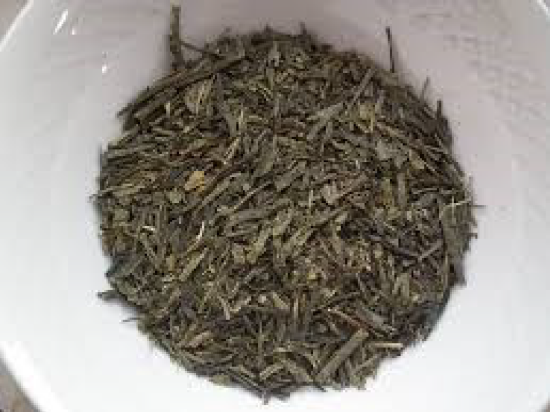
Sencha Tea. Wikipedia
White tea: A delicate green tea made from new buds picked before they open. Allowed to wither so that natural moisture evaporates, these leaves are lightly dried to a pale silvery color. White tea has a subtle flavor.
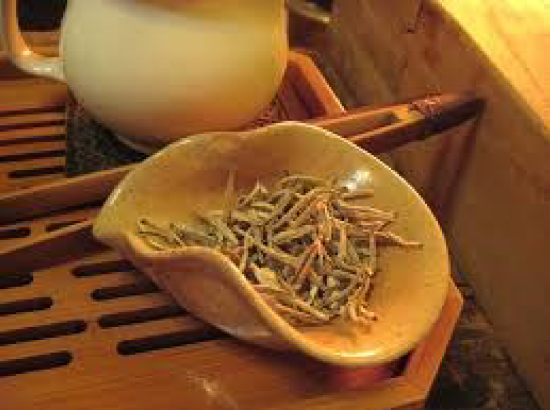
White Tea. Flickr
Oolong Teas
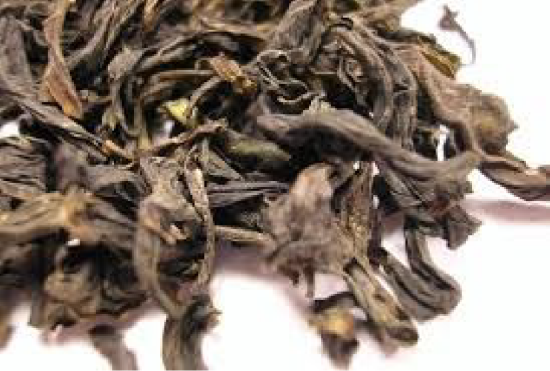
Oolong Tea. Wikipedia
Formosa Oolong: A unique and expensive large -leafed oolong tea with the flavor of ripe peaches. It is appropriate for breakfast or afternoon tea.

Formosa Oolong Tea. Wikipedia


